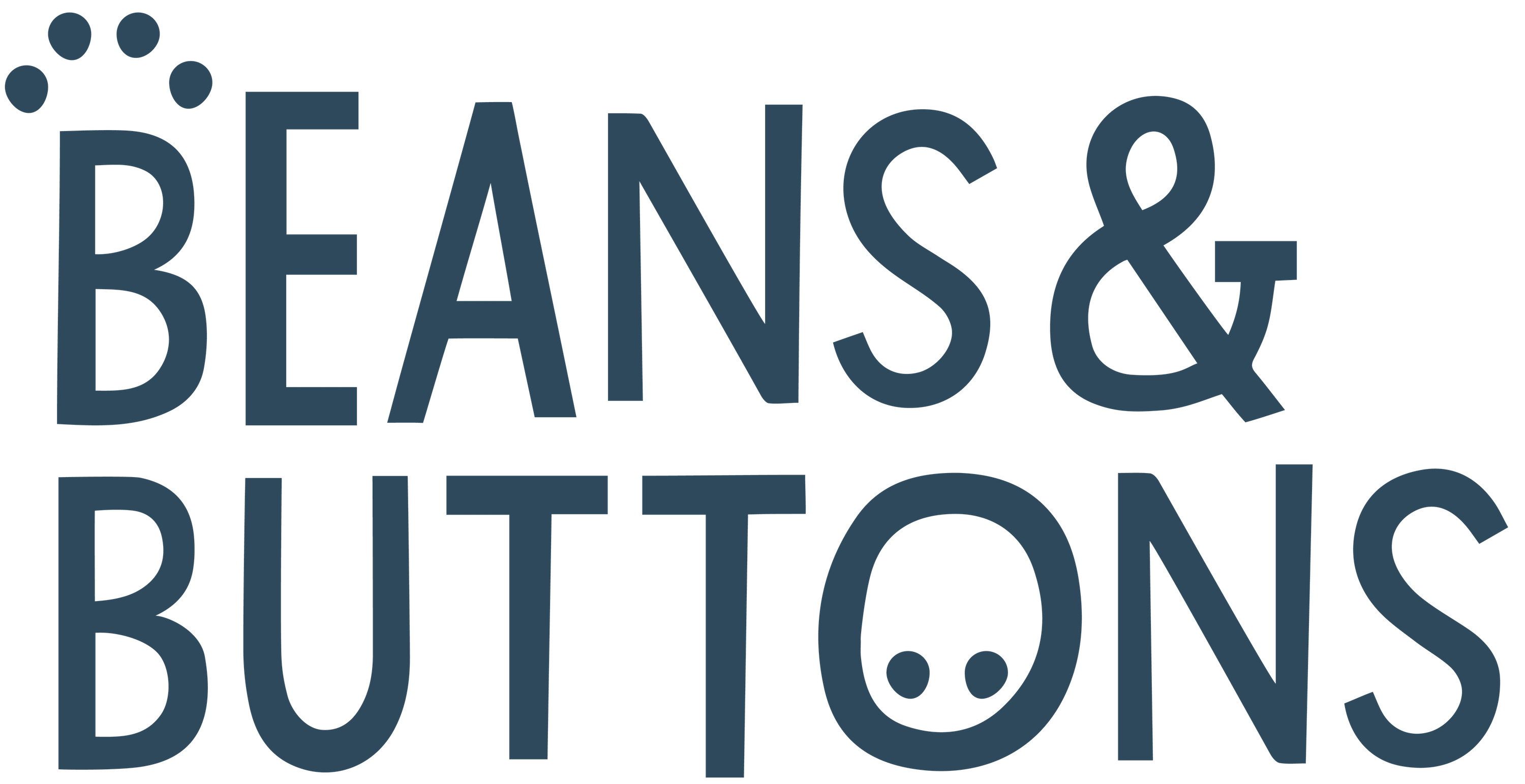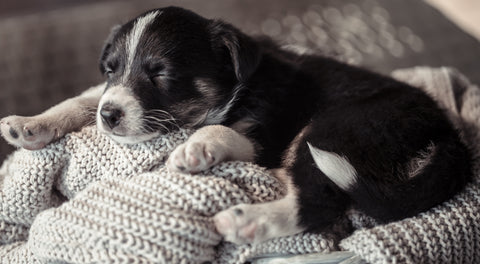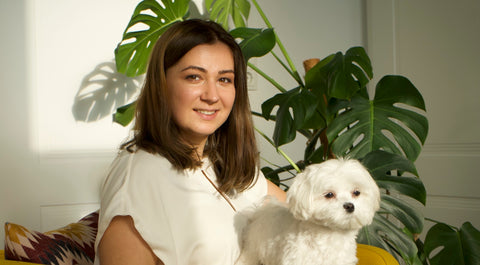In the first few days you will get to know your puppy’s rhythm and you will introduce them to your life. You can ease the stress of those first days and weeks by preparing a couple of things in advance. A couple of toys and some basic equipment will help you be more relaxed and focus on welcoming the new pup home.
Leash, collar and harness
Thinking of a dog’s gear, a leash - collar - harness combination are the first association. Even though you will not walk your dog much at the beginning, it is good to have a leash, and a collar or harness available in case you need them.
Harness or collar?
One of the hardest things your puppy will need to learn is to walk on a leash. There will be a lot of confusion on your dog’s side and a lot of pulling.
It will be very helpful for you to be well equipped for different situations. Therefore, we recommend getting both a harness and a collar. Depending on the situation or type of activity you will want to use either the harness or a collar.
We recommend using a collar only after your puppy can walk on a leash with a harness. Harnesses are more gentle on the puppy’s neck and there is a lower risk of choking.
For breeds prone to breathing issues (pugs, French bulldogs, etc.) only use a harness. A collar might be restricting them from breathing well.
Stir away from “no pull harnesses” with a strap across your dog’s shoulders. The strap across the shoulder might harm your dog. It’s always the training, not the tools that will teach your dog to not pull.
Leash
From the standard versions at the pet store to customizable options from small online shops – there are many options!
Length of leashes:
Fixed length 1-1.5m
- Great for places where your dog should not get too far away from you. This is a great starting leash for the city as it gives both you and your dog clear boundaries. It is also short enough to prevent your dog from running off to the middle of the street.
Fixed length 3m
- A leash length that you can use to let your puppy explore and sniff without running off too far. Often used at dog training lessons to teach focus in difficult situations and recall.
Adjustable length with two clips
- These are very handy as you can easily adjust them for your needs. Make sure the hooks and rings aren’t too heavy for your small puppy if you get one right from the start.
Long lead 5-15m
- This length will grant your dog freedom with a safety anchor. Only attach a lead like this to a harness.
Flexi leash, also called a retractable leash
- You can use this leash like the long lead. We don’t recommend this leash type for the city as you’ll have very little control of your dog’s reactions. Use only with a harness.
Material
There are pros and cons to all materials, it depends a bit on your own preference. Make sure that your first leashes are dirt-resistant and keep them away from your puppy’s sharp teeth.
Some examples of materials:
- Rope leash – standard, no-frills leash for everyday activities
- Biothane – very popular material, durable, not slippery when wet, scent-free
- Nylon – your basic dog leash, easy to wash
- Leather – strong and durable, needs regular maintenance
Crate or puppy pen
You can use a crate or puppy pen in different ways. Literature often recommends a crate for potty training and for training your dog to be calm.
There is an added bonus! If your puppy is able to relax in their crate or pen, you are free to do everything your puppy would interfere with. You can then do your relaxing yoga routine or simply clean up in peace :)
Crate training also helps your dog have a safe space to relax in the brief moments when you’re not around. This method might also be helpful if you want your dog to sleep in another room or when you want to leave him overnight with family or friends.
Food and water bowls
Get easy to clean dishes for both, water and food for your puppy. Make sure to regularly clean both, bacteria can easily build up in dirty dishes.
Additionally, get a bowl or bottle you can take with you to always have water available for your dog. If you opt for a water bottle check if it's leakproof.
Activation & chew toys
Your puppy will come equipped with a set of very sharp teeth and it will not shy away from using them. You will need a lot of distraction for your puppy to avoid a small renovation streak once your puppy finished teething.
To teach your puppy what to chew on, you need a good set of chew toys or treats to quickly redirect them to and praise when choosing those.
Kong or West Paw activation toys: Both brands offer highly durable chew toys that can easily be stuffed with treats or dog food. Motivating your puppy to lick and chew on them will stimulate them mentally and tire them out.
Dog bed
Your dog will enjoy having a space for themselves.
When getting them a new bed you might notice that they don't use it as you expected them. They will need time to get to know this new item and get comfortable with it.
You can speed up the process by leaving treats on the bed or by putting the bed in their crate or puppy pen. Eventually, when the puppy is comfortable with the bed and has left their scent on it you can move it around. The puppy will let you know where he feels safe and most comfortable to sleep :)
Cleaning equipment
Get yourself a disinfection spray that gets rid of odors. There will be potty accidents no matter how hard you train and it’s good to be prepared for them.
Pee pads can help you out by covering more delicate areas in your apartment. However, they are not a bullet proof solution – pee can always get through.
Toys
Toys! The best part of the equipment list – go for whatever your puppy enjoys playing with.
Be aware that puppy teeth of bigger and stronger breeds might quickly pierce and puncture plush toys.
Consider limiting access to the toys while you are not actively playing. This will help keep the puppy’s joy level high once they get to play with their toys. (And to keep the plush toys safe!)




Comments (0)
There are no comments for this article. Be the first one to leave a message!